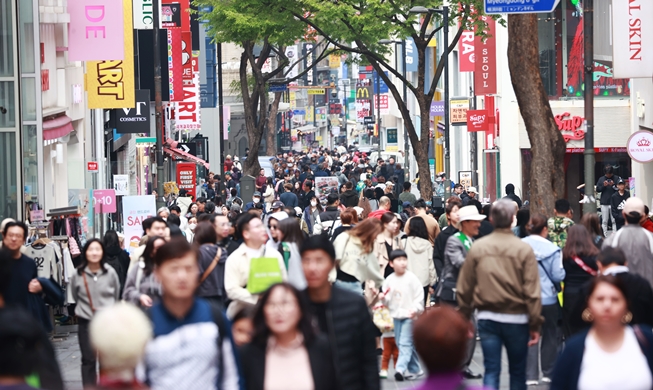-
 Korea.net's 24-hour YouTube channel
Korea.net's 24-hour YouTube channel- NEWS FOCUS
- ABOUT KOREA
- EVENTS
- RESOURCES
- GOVERNMENT
- ABOUT US
View this article in another language
- 한국어
- English
- 日本語
- 中文
- العربية
- Español
- Français
- Deutsch
- Pусский
- Tiếng Việt
- Indonesian
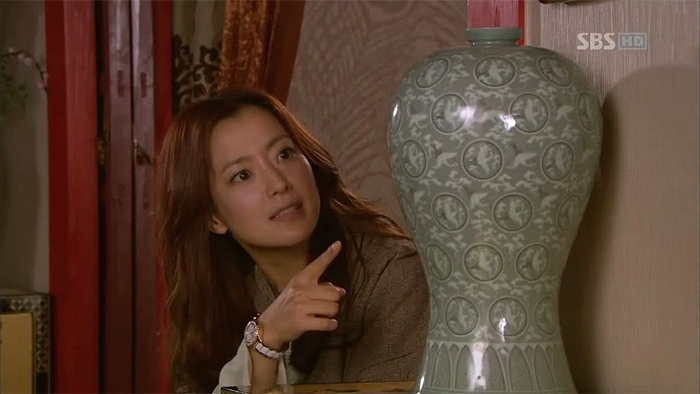
In the Korean TV show 'Faith' (신의), the main actress, Kim HeeSeon, tells of an expensive Goryeo celadon vase. (SBS)
By Korea.net Honorary Reporter Diana Trifonova
In the world of Korean soap operas, the year 2012 is remembered for the funny mish-mash between history and fiction that came to life with the TV series "Faith" (신의) (SBS, 2012). The production starring Lee Min Ho and Kim HeeSeon tells the story of a modern-day plastic surgeon (Kim HeeSeon) who's kidnapped and forced to travel back in time to ancient Goryeo. While in the past, she falls for the chief of the royal guards, played by Lee Min Ho. A particularly memorable moment in the series that popped up throughout the episodes was when Kim HeeSeon’s character kept trying unsuccessfully to steal a Goryeo celadon vase with the intent of selling it for a huge amount of money once she returned to the future.
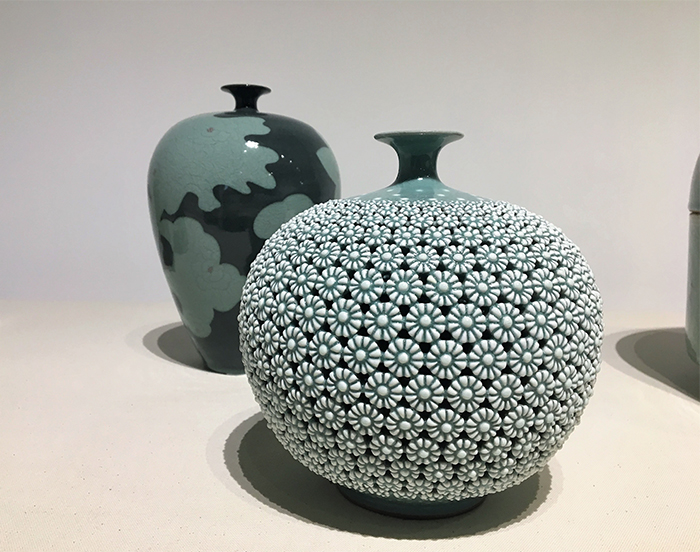
A celadon chrysanthemum double-walled vessel is made by Kim Seyong. (Diana Trifonova)
This scene came to mind when, a week ago, I attended my first exhibition of modern Korean ceramics at the Korean Cultural Center in the U.K. The exhibition, "Constancy and Change in Korean Traditional Craft," presents to the public four traditional Korean ceramic styles, as well as objects with a modern-day twist. There's the already-mentioned celadon, or cheongja, baekja porcelain, buncheong gray ceramic ware that has a tint of white and onggi food storage vats that are almost always brown. All of them are all on display at the cultural center between May 3 and June 3.
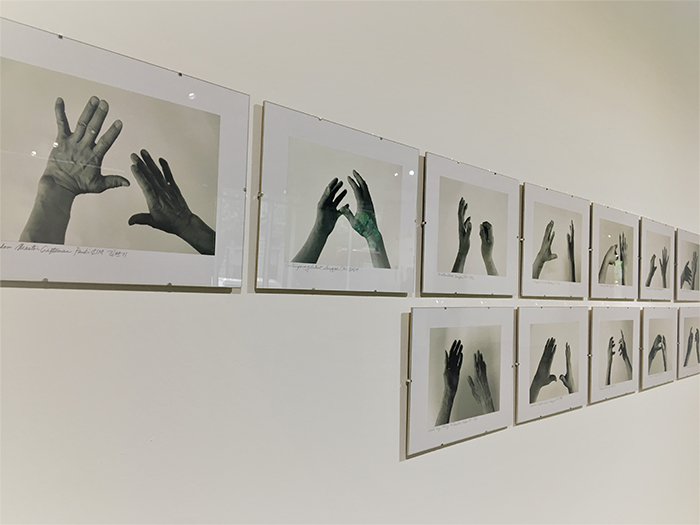
The exhibition features photos of the hands of the potters. (Diana Trifonova)
The exhibitions offer a rare glimpse into some 90 ceramic works. On display you can see containers, vessels, stationery, moon jars and traditional water carriers. The exhibition also takes you through the process of making ceramics, presenting a vast number of tools that artists would use to produce such beautiful objects, as well as a series of photos that present the most important ingredients in the creation of such objects: the hands of the artists.
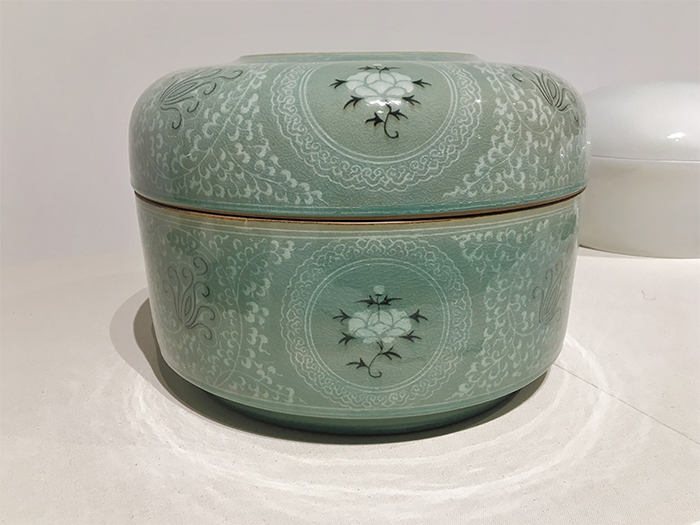
A celadon container is made by Yoo Kwangyul. (Diana Trifonova)
The exquisite and very delicate celadon pieces on display in the exhibition are an example of the main types of ceramics produced on the Korean Peninsula during the five centuries of Goryeo (918-1392). The color of the Goryeo celadon owes much to the presence of iron, manganese oxide and quartz in the glaze. Today, just like in the past, the tradition of Korean celadon is preserved in Jeollabukdo Province and Jeollanamdo Province. This includes, specifically, the region around Gangjin.
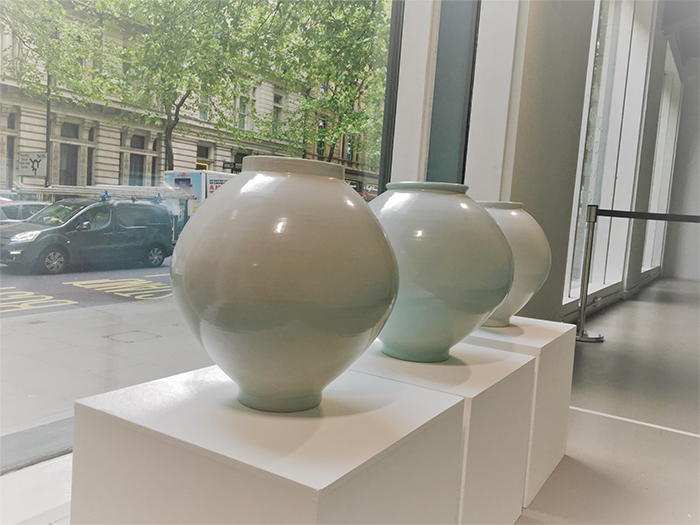
A porcelain moon jar is by Seo Kwangsu. (Diana Trifonova)
A second series of very traditional Korean objects that can be seen at the exhibition are the famous moon jars. These milky white, yet bluish, porcelain jars are masterpieces. They were very popular in the mid-17th to the mid-18th century and were used to store food and beverages. The simplicity of the jars has inspired many contemporary artists, including the prominent New York-based author Kang Ik-Joong. An interesting aspect of the process of making these jars is that because of their size as well as because of the softness of the clay, the top and the bottom part of the vessels are made separately, and then the potter has to adjust them later.
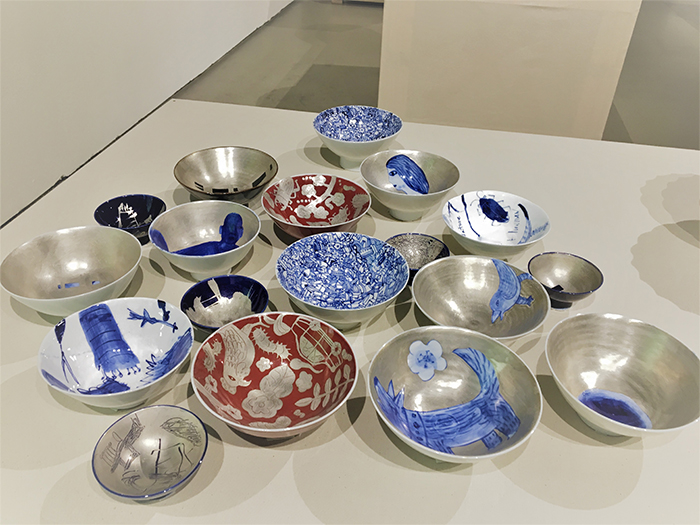
Other ceramic wares are also on display. (Diana Trifonova)
wisdom117@korea.kr
http://koreanetblog.blogspot.kr/2017/05/a-glimpse-into-world-of-korean-ceramics.html
Most popular
- First hearing-impaired K-pop act hopes for 'barrier-free world'
- Expats could account for 7% of population in 20 years: report
- 'Mad Max' director impressed by 'cinema-literate' Korean viewers
- Show in Italy to present 'thought-filled' Korean craftworks
- Romanian presidential couple visits national cemetery




